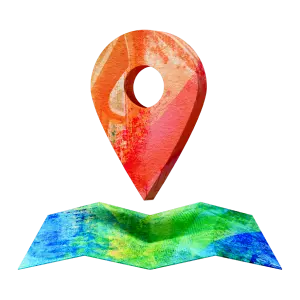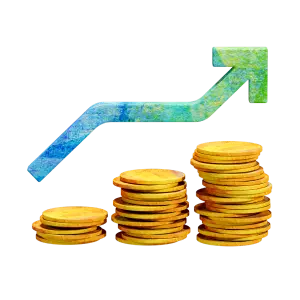Thaise baht (THB)
De Thaise baht is de munteenheid van Thailand. De valutacode is THB, en het wordt ook aangeduid met het symbool ฿. De baht is de 10de meest gebruikte valuta in de wereld, en is één van de sterkste valuta in zuid-oost Azië. De Thaise baht wordt het meest gewisseld met de euro. De omrekenfactor van de Thaise baht gaat tot 6 significante cijfers, en het is een fiduciaire valuta.
Muntsoort
Thaise baht
Valutasymbool
฿
THB wisselkoers
| USD | EUR | CAD | AUD | GBP | INR | ZAR | SGD | |
|---|---|---|---|---|---|---|---|---|
| Van THB | 0.02869 | 0.02716 | 0.04024 | 0.04431 | 0.02258 | 2.42256 | 0.52274 | 0.03854 |
| Naar THB | 34.86000 | 36.81390 | 24.85120 | 22.56660 | 44.28440 | 0.41279 | 1.91299 | 25.95010 |
Pas op voor slechte wisselkoersen.Banken en traditionele aanbieders maken vaak extra kosten, die ze dan weer doorberekenen aan jouw in de vorm van een commissie in de wisselkoers. Onze slimme technologie maakt ons efficienter - wat betekend dat jij een geweldige wisselkoers krijgt. Elke keer weer.
| Naam | Thaise baht (THB) |
|---|---|
| Symbol | ฿ |
| Minor Unit | Satang |
| Minor Unit Symbol | สตางค์ |
| Notes Freq Used | ฿20, ฿50, ฿100, ฿500, ฿1000 |
| Coins Freq Used | ฿1, ฿2, ฿5, ฿10 |
| Central Bank | Bank of Thailand |
| Users | Thailand, Laos, Cambodia, Myanmar |
Facts Table for Thaise baht (THB)
Currency evolution in Thailand traces back to the Rattankosin era, marking the official issuance of standardised factory-made coins and banknotes. Paper money made its debut in 1853 through royal promissory notes, followed by banknotes from foreign banks. The year 1857 saw Thailand acquiring its inaugural minting machine, initiating the minting of Thai silver coins. Streamlining coinage occurred in 1897, condensing the 11 denominations into two—satang and baht—under a decimalized silver standard system.
Thai Baht and International Currencies
The Thai Baht was initially pegged to the British Pound at a fixed rate of 8 TBH to 1 GBP until 1880. Subsequently, this rate underwent several adjustments, linking the Baht to the Japanese Yen at par during World War II. Post-war, it was pegged at 20.8 Baht per 1 US Dollar, transitioning to 20 Baht per US Dollar in 1978 and then to 25 Baht in 1984.
A financial crisis struck Thailand in 1997, causing a 50% devaluation of the Baht and compelling the adoption of a floating exchange rate system. Following this economic collapse, the Thai Baht eventually stabilised.

Thai Baht Modern History
Despite its official use limited to Thailand, the Thai Baht is informally utilised in Laos, Cambodia, and Myanmar.
On December 19, 2006, the Bank of Thailand implemented exchange controls that led to substantial differences between offshore and onshore exchange rates, resulting in spreads of up to 10 percent between these markets. However, these controls were largely lifted by March 3, 2008, erasing significant disparities between offshore and onshore exchange rates.